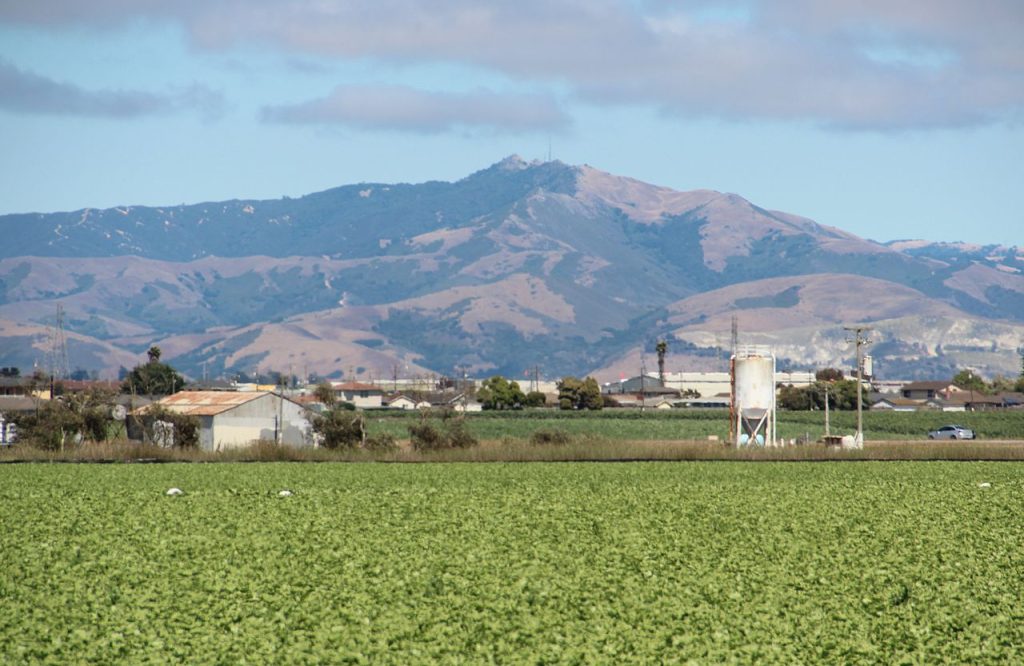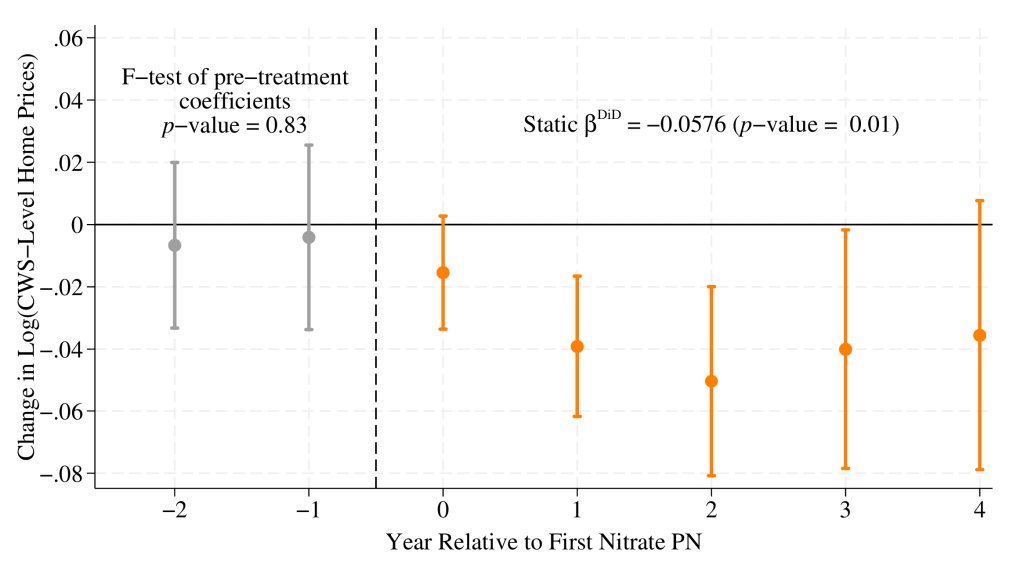Nitrate Contamination and Home Prices in California
While I was in graduate school, I had the opportunity to work on a project exploring how consumers reacted to news that their tap water was unsafe to drink. Using data from across the United States, we found that bottled water sales increased in counties where local water systems issued public notifications about drinking water contamination.

Buying bottled water allows consumers to avoid drinking contaminated water and makes perfect sense as an immediate, short-term response to contamination. After finishing this project, however, I was interested in the longer-run impacts of water contamination. In a solo project that was recently accepted for publication (available here as a working paper), I explore what happens to home prices when California residents learn their drinking water contains unsafe levels of nitrates.
What is this paper about?
California recognized access to safe drinking water as a human right back in 2012. Yet nitrate contamination from agricultural fertilizers and animal waste remains a serious problem, especially in the Central Valley. When water systems detect unsafe nitrate levels, they’re required to notify residents within 24 hours – these are called “Tier 1” notifications because of the serious health risks involved. I wanted to know: when people find out their water is contaminated, what happens to local home values?
What does this paper say?
Using home price data from 2000 to 2024 across California, I found that nitrate contamination notifications lead to significant declines in home prices – about 5.8% on average. For a typical home worth around $397,000, that’s a loss of about $23,000 in value.
The effects show up quickly after notification and persist for several years afterwards. Average home prices in affected areas drop most in the first three years after residents learn about the contamination, with declines between 3% and 5%.
For an average-sized water system serving about 27,700 people, the total economic cost comes out to roughly $212.5 million. That’s a substantial hit to community wealth.

What should I take away from this paper?
When families learn their tap water isn’t safe, they face immediate costs (buying bottled water, installing filters) and long-term consequences (reduced home values, pressure to move). For the 1.4 million Californians living in water systems that have experienced nitrate contamination issues, this research puts a dollar figure on an environmental problem that’s often discussed in health terms alone.
This matters because nitrate contamination in California isn’t going away. A major state investigation concluded such contamination issues will “likely worsen for several decades.” Agricultural areas face an ongoing tension between farming practices that feed the nation and protecting the water that local communities depend on.
These findings also tell us something important about information disclosure laws. The EPA’s requirement that water systems notify residents about contamination clearly has teeth – people pay attention and markets respond. This suggests “right-to-know” policies can be effective, even if the news they deliver is unwelcome.
